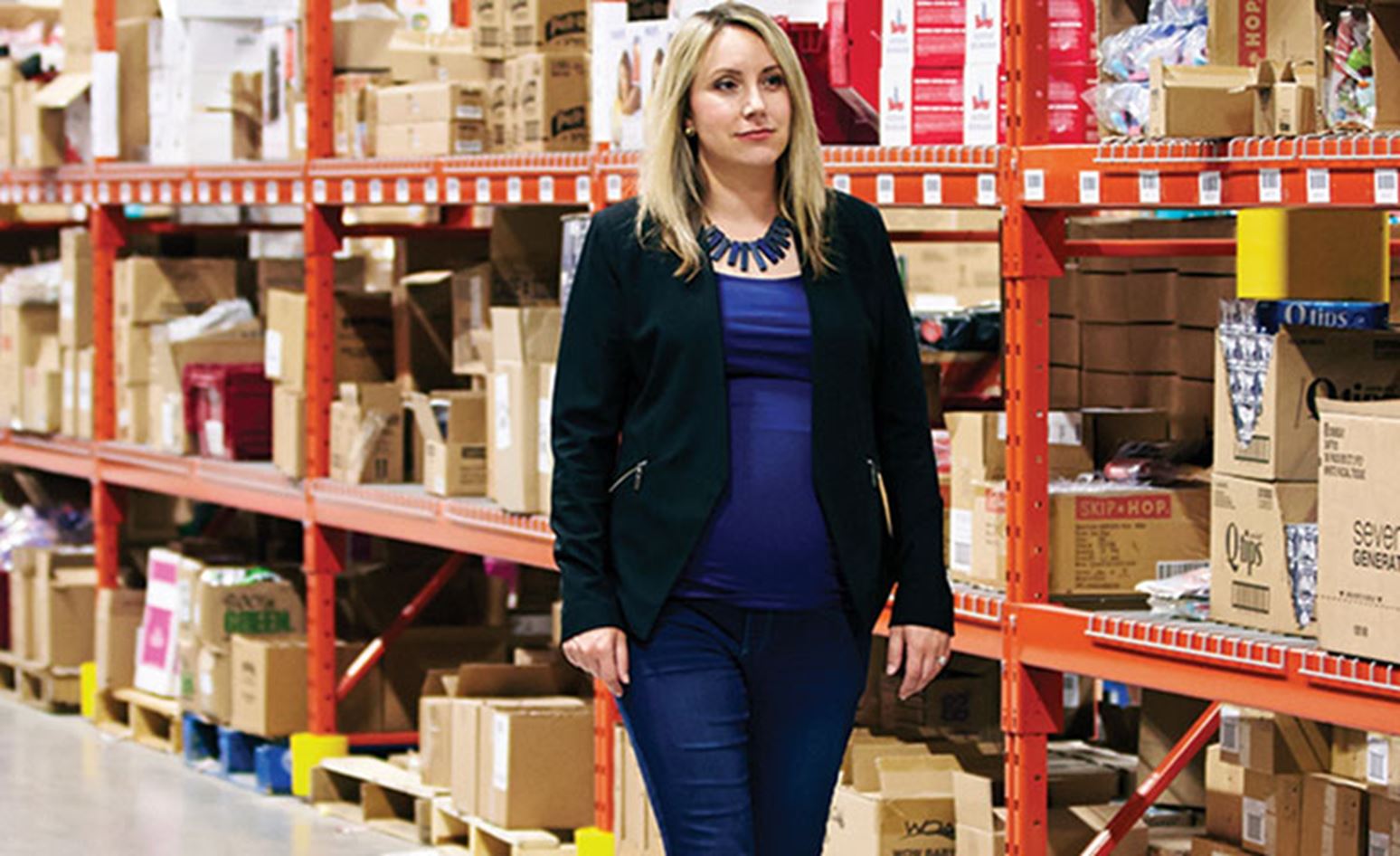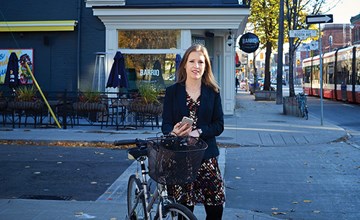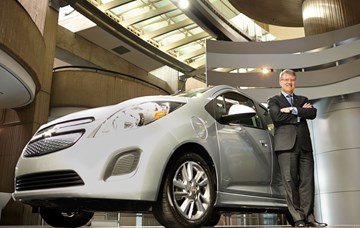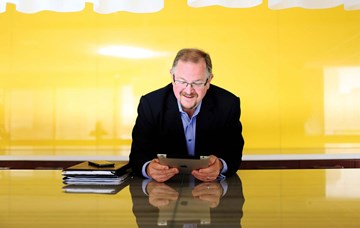Ivey alums are leading in the ever-changing retail world. They share how they’re adapting, and what it takes to ensure a great online shopping experience for customers.
When Rebecca McKillican, HBA ’02, was working in New York City, she became an avid online shopper. It was part of her daily routine—and that of many others—to stop by the doorman’s desk on her way to her apartment to pick up packages that had been delivered during the day. When she moved back to Canada, McKillican was disappointed to find e-retail less mature. “As a new parent, I was struggling to shop in the convenient way I had shopped in the U.S.” Eventually she discovered a good website for health, beauty and baby products, Well.ca. Today she is CEO of the company.
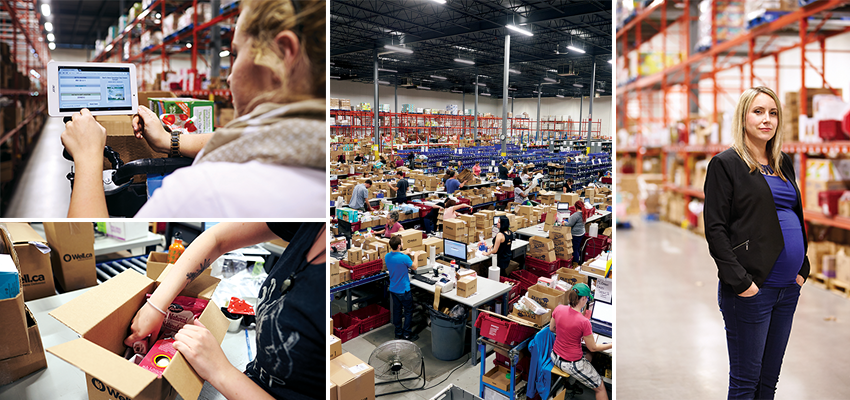
McKillican is one of many Ivey alumni who have embraced the business opportunity (and personal convenience) of e-commerce. It’s a sector that’s seen eye-popping growth in recent years. The U.S. e-commerce economy alone is worth $349 billion. In Canada, the figure is more than $30 billion, not far behind proportionally. And, if anything, the pace is accelerating. “We’re nowhere close to tapping the true potential of e-commerce,” says Gaurav Wadhawan, EMBA ’13, Senior Supply Chain Manager at Amazon. “The sky’s the limit.”
The Customer Is King
The success of Well.ca and other e-commerce sites, says McKillican, rests on delivering an exceptional customer experience. From the more than 100,000 reviews and regularly refreshed original content, to the easy checkout and fast shipping, Well.ca is designed to “surprise and delight.” When an employee picks and packs an order, he or she writes “thank you” on the invoice. Says McKillican, “It’s the small touches that make the customer realize there’s a person behind every box.”
Ultimately, she sees online shopping as a way for busy customers to buy some time, along with their everyday needs. “We’re helping people reallocate the time they spend shopping, and giving them back time to spend in the areas that matter most to them.”
Marc Faucher, MBA ’00, has similar goals. Faucher is COO at Unata, a company that provides turnkey e-commerce, e-circular and e-loyalty solutions for grocery stores. Unata enables consumers to order their groceries online and then pick them up curbside. The company has contracts with seven major brands, with others under negotiation. Unata clients are doing as much as five to six per cent of sales online, compared to an average of half a per cent across the sector.
Customizing the Experience
Unata’s real potential, Faucher says, lies in the ability to customize the shopping experience. “We now have a direct connection to the consumer 24/7, not just when they’re in the store,” he says. “We can use that channel to reach and promote to them in different ways.” For example, instead of the traditional (and universally detested) newspaper flyer, customers can now receive an e-flyer featuring the offers most relevant to them. The company is working on further enhancements, such as in-home barcode scanning to automatically add products to the shopping list. Beacon technology will soon make the in-store experience richer, too, with alerts for relevant offers and detailed product information. By comparing the shopping list to the actual purchase, Unata helps retailers identify what wasn’t purchased, and push appropriate offers to the customer.
Says Faucher, “It’s about augmenting the experience in very subtle ways, making it better, more efficient, and simpler. Hopefully that translates into greater loyalty and share of wallet.” Subtlety, he says, is essential: overwhelming the customer with whiz-bang technology using their personal information can be a turn-off.
Nadia Hassanein, HBA ’11, agrees. Hassanein is Senior Manager of Site Improvements and Digital Systems at HBC Digital, a standalone division of the department store conglomerate. “There’s a lot of smart technology and a lot of ways to optimize the shopping experience,” she says, “but you don’t want to overcomplicate the experience. If it’s not intuitive and comfortable, people will resist it.”
Find-and-Buy
Successful e-commerce taps into what makes old-style shopping enjoyable, says Hassanein. “In the past, online shopping was very boring and isolating,” she says. “More and more the social and interactive aspects of shopping are happening online.” Shoppers can show items to their friends, read reviews, post photos of previous purchases, and get feedback from sales associates. The best e-retailers also make it as convenient as possible for customers to “find and buy”—offering good searchability, recommendations, size information, secure checkout, and easy returns.
Hassanein points out that in addition to racking up online sales, e-commerce sites are valuable in motivating offline purchases. For example, if customers can return an online purchase to a bricksand- mortar store, they’re more likely to buy something else while they’re there.

Larry Rosen, LLB/MBA ’82, CEO of Harry Rosen Inc., agrees that online drives offline. He estimates that well over half the customers in his high-end menswear stores have looked at the website before coming in to shop. Many pull out their phones and point to the product they want.
In addition to creating an effective website, Harry Rosen has introduced a service called “Virtual Harry.” The service enables regular customers to connect with their own special sales associate—the one they see when they come into the store—for information and ideas. “Ours is a relationship-based selling model,” he says. “Our associates work hard to earn trust and learn about their customers. Technology enables us to extend that relationship online.”
Mobile Mania
Some 30 to 40 per cent of traffic on the Harry Rosen website comes from mobile devices. That’s not surprising, given the rapid growth of mobile in almost every sector. Of course, mobile devices can’t provide as much data as computers, so retailers have to think carefully about what to include and what to strip away in mobile applications. Michael Yee, EMBA ’07, Executive Vice President of Global Supply Chain, Global Sourcing, and Product Operations at Gap Inc., says his company is focusing on these questions. “We’re looking at how to make the digital experience come alive on a small device, and how to make it easier to maneuver with a finger.”
Gap was an early adopter in the e-commerce space. Today, 10 to 15 per cent of its business is online and the company continues to innovate. One focus is on the presentation of products. Employees use data to determine which types of photographs work best at which points in the buying cycle, and which images produce the highest level of “conversion” (i.e., an actual purchase).
Gap is also working to understand which products to offer through their online stores, given that the space restrictions of bricks-and-mortar stores don’t apply. Hassanein calls this the “endless aisle experience,” and notes that drop shippin —fulfilling orders directly from the manufacturer—enables online stores to offer more variety in style and size.
Another area of development is how to integrate the online and offline shopping experience seamlessly. For example, when customers choose a product in a Gap store, but the store doesn’t have the colour they want, they can purchase it online while in the store. Alternately, they can reserve products online and pick them up at their nearest store.
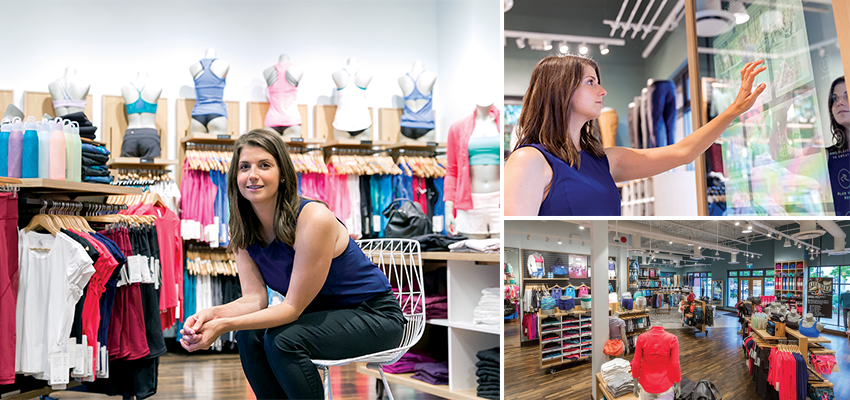
Channel Agnostic
Creating a seamless shopping experience is also an important focus at athletic wear retailer Lululemon, where Diane Edgeworth, MBA ’10, is the Guest Experience Innovation Strategy Manager. With the retailer’s mobile app, customers (called “guests” at Lululemon) can choose an item and find the closest store that has it in stock, then order through the app, or drop by and pick it up. “We are looking to become channel agnostic,” Edgeworth says. “We don’t care if a sale happens through e-commerce or physically in a store. Ultimately, we want to simplify the experience for our guests and meet their known and unknown needs.”
Lululemon recently introduced digital mirrors in a handful of stores and is looking at using them to display products that are not available in store, provide additional product information, and even to purchase from. But Edgeworth says retail will continue to evolve, using technologies such as virtual reality to create new shopping experiences. “Someday you may be able to go shopping with your best friend who lives across the country, with both of you sitting in your living rooms, and shop in a virtual store with a virtual sales associate supporting you.”
Signed, Sealed and Delivered
One of the challenges faced by e-retailers is logistics. With more consumers expecting free and ever faster delivery, costs are significantly higher than for traditional stores. Delivery is a big focus at Amazon. The company now delivers products to customers in two hours or less in some areas, and is well on their way to delivering by drone. Says Wadhawan, “We’re raising the bar on customer expectations and the shopping experience will evolve with it. Folks will realize they can order their Christmas presents on Christmas Eve, and be confident that Amazon can deliver!”
So as e-commerce gets better and better, does it spell the end of bricks-and-mortar stores? “There’s space for everyone, but they will have to evolve,” says Wadhawan. “Offline stores really have to think long and hard about what they offer that is unique and valuable to consumers.” Interestingly, Well.ca and Amazon, both pure online players, have ventured into the world of bricks and mortar. Well.ca has a store in Guelph, Canada and opened a pop-up store in the Toronto area this past summer. Amazon has opened a bookstore in Seattle.
Rosen is convinced that online shopping won’t replace the shopping experience in his stores. “You’re never going to be able to go online, try something on, and see if it looks good on you.” Edgeworth agrees. “There was a lot of talk about the death of the mall a few years ago,” she says. “But it’s more about learning to adapt to changing consumer behaviour.” Hassanein also sees the future of retail as an “omnichannel” experience. “It’s not online versus bricks and mortar anymore,” she says. “It’s really clicks and mortar—seamless and complementary.”
Photos: Nation Wong (all but Diane)
Photos: Steven Errico (Diane)
Art Direction: Greg Salmela, Aegis
